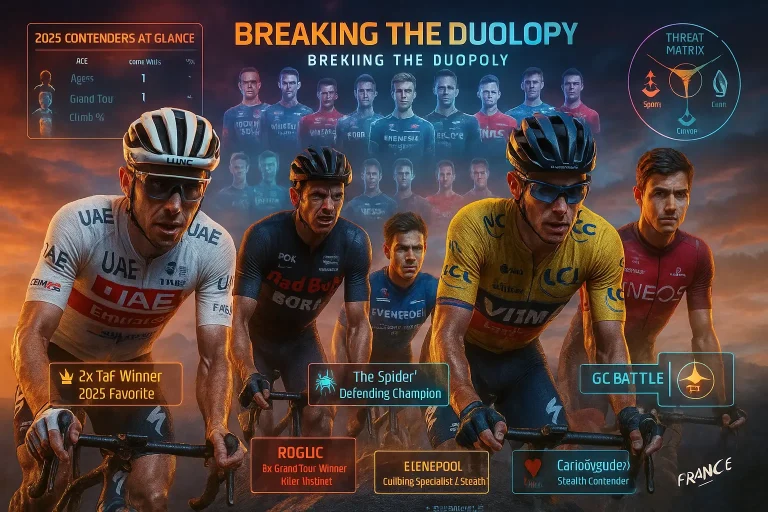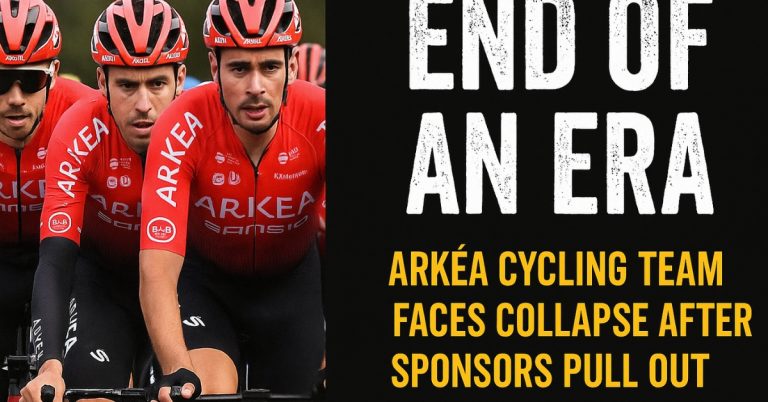Tour de France 2025 Classifications, Explained
Wondering how the Tour de France 2025 is scored or what those famous jerseys actually mean? From sprint points and mountain battles to the coveted yellow jersey chase, we’ve got you covered. Here’s your ultimate, fan-friendly breakdown of the race’s key classifications, scoring rules, and what makes each jersey worth fighting for this summer.
📌 Stages: 21 Days, 21 Winners
Each of the Tour de France’s 21 stages crowns a winner at the finish line — but there’s a lot more going on behind those photo finishes. Every stage influences several different race classifications, with bonus seconds (10, 6, and 4) awarded to the first three across the line. These time bonuses can be crucial in the race for yellow and the youth standings. On mountain stages, things heat up even more at summit finishes, where extra points are on offer for the climbers chasing polka-dots.
🟡 General Classification (GC): The Race for Yellow
This is the big one. The General Classification ranks riders by their total elapsed time across all 21 stages. Whoever has the lowest combined time at any point wears the legendary maillot jaune — the yellow jersey. It’s the jersey every cyclist dreams of pulling on at least once in their career, and it’s typically a showdown between the sport’s strongest climbers, time trialists, and tacticians.
🟢 Points Classification: The Sprinters’ Prize
Known as the green jersey, this one belongs to the fastest finishers in the peloton. Riders earn points at designated sprint zones during stages and at the finish line — with flat stages offering the biggest rewards. Sprinters like Jasper Philipsen, Arnaud De Lie, and Sam Bennett will be hunting for this jersey, while punchy opportunists might sneak in points on lumpy days too.
🔴⚪ Mountains Classification: King of the Climbs
Nicknamed the polka-dot jersey, this classification celebrates the best climber in the race. Points are dished out at the summits of categorized climbs — from short, sharp hills to iconic Alpine monsters like Col du Tourmalet. The tougher the climb, the more points on offer. Expect aggressive climbers and stage hunters to chase this jersey with breakaway moves, while GC contenders often scoop up big points on summit finishes.
⚪ Youth Classification: Next-Gen Legends
This one works just like the General Classification, but it’s only open to riders under the age of 26 by December 31, 2025. The best young rider wears the white jersey, and it’s often a showcase for the sport’s future superstars. Recent white jersey winners include Tadej Pogačar and Egan Bernal — and you can bet the 2025 crop of young guns is stacked.
Team Classification: Strength in Numbers
The team classification adds up the daily finishing times of each squad’s top three riders. No time bonuses here — just pure pace and consistency. The leading team gets to ride with yellow race numbers and helmets, a subtle but serious flex in the peloton. It rewards squads that race aggressively with depth and tactics, not just a single GC superstar.
📌 Recap: Tour de France 2025 Jerseys & What They Mean
Jersey | Meaning |
|---|---|
🟡 Yellow | Overall race leader (lowest total time) |
🟢 Green | Points leader (sprinters’ prize) |
🔴⚪ Polka-dot | Best climber (mountains classification) |
⚪ White | Best young rider (under 26 GC leader) |
🟡 Race Numbers | Best team in team classification |



